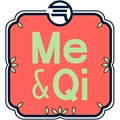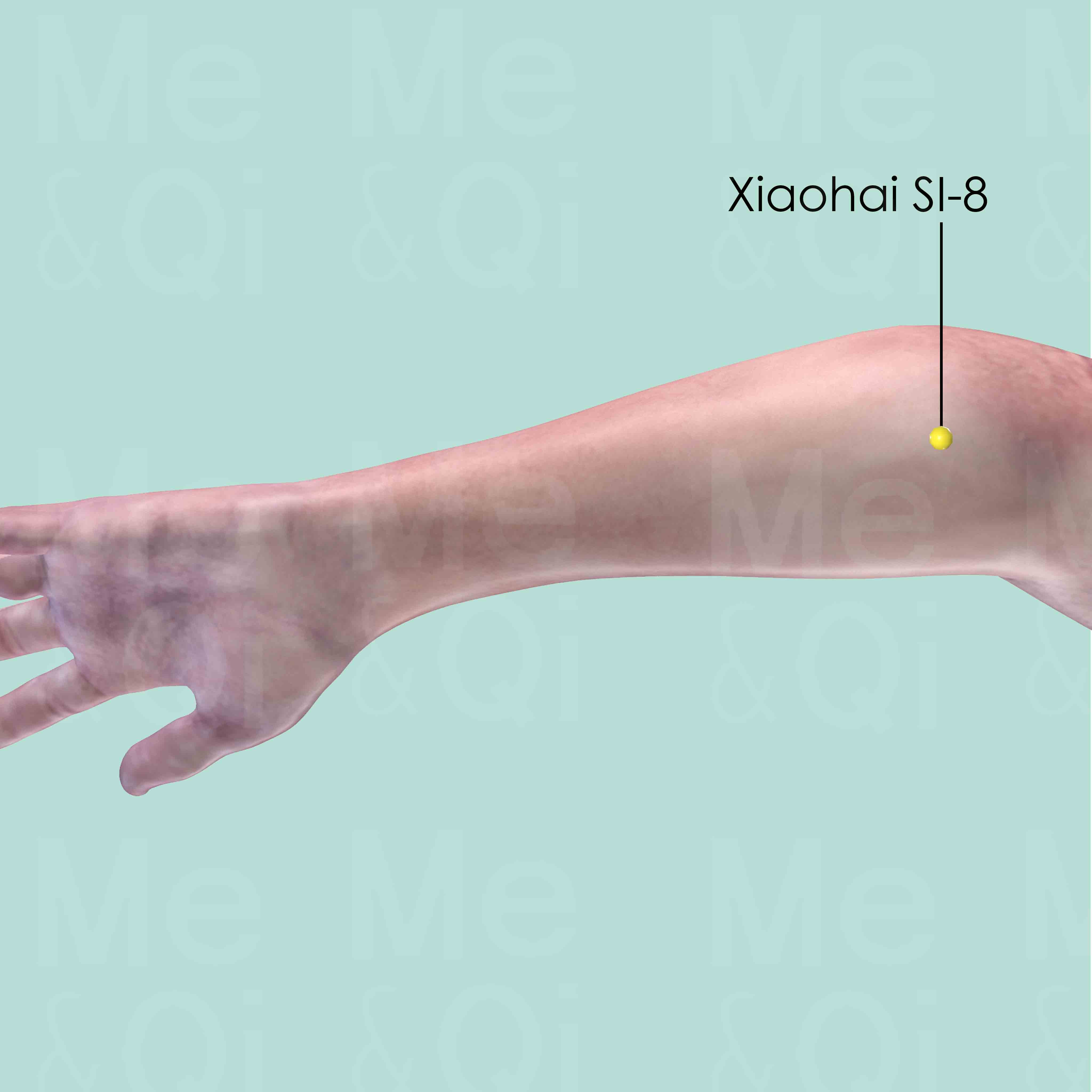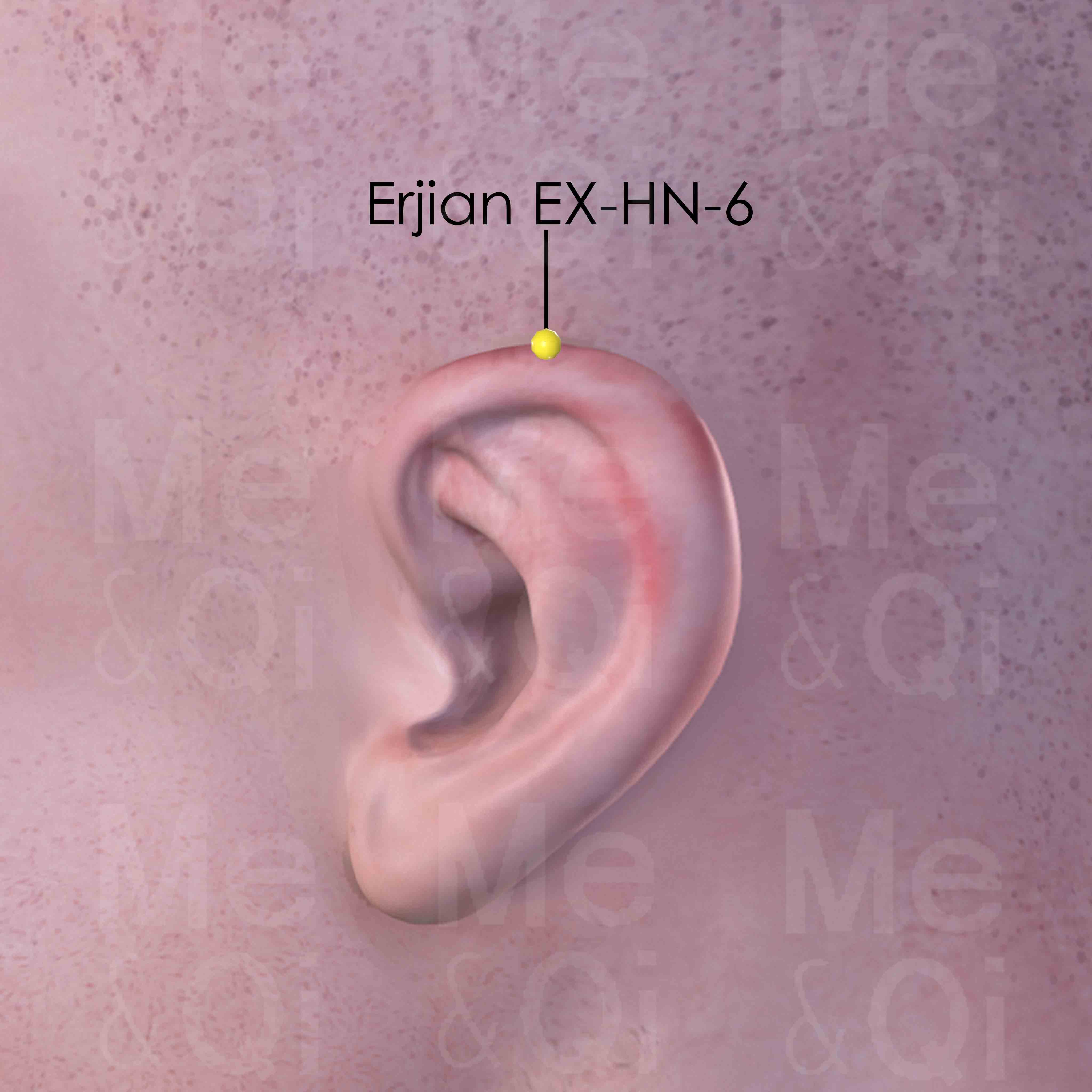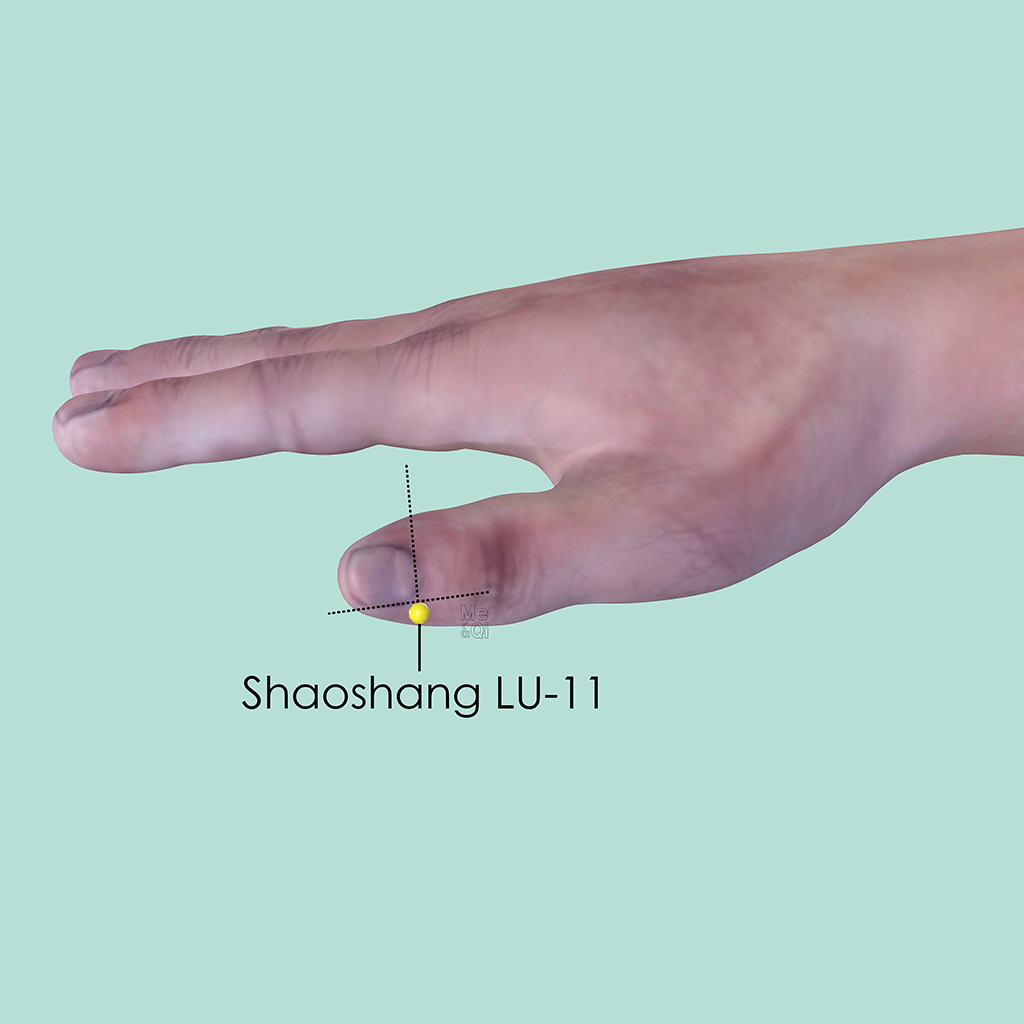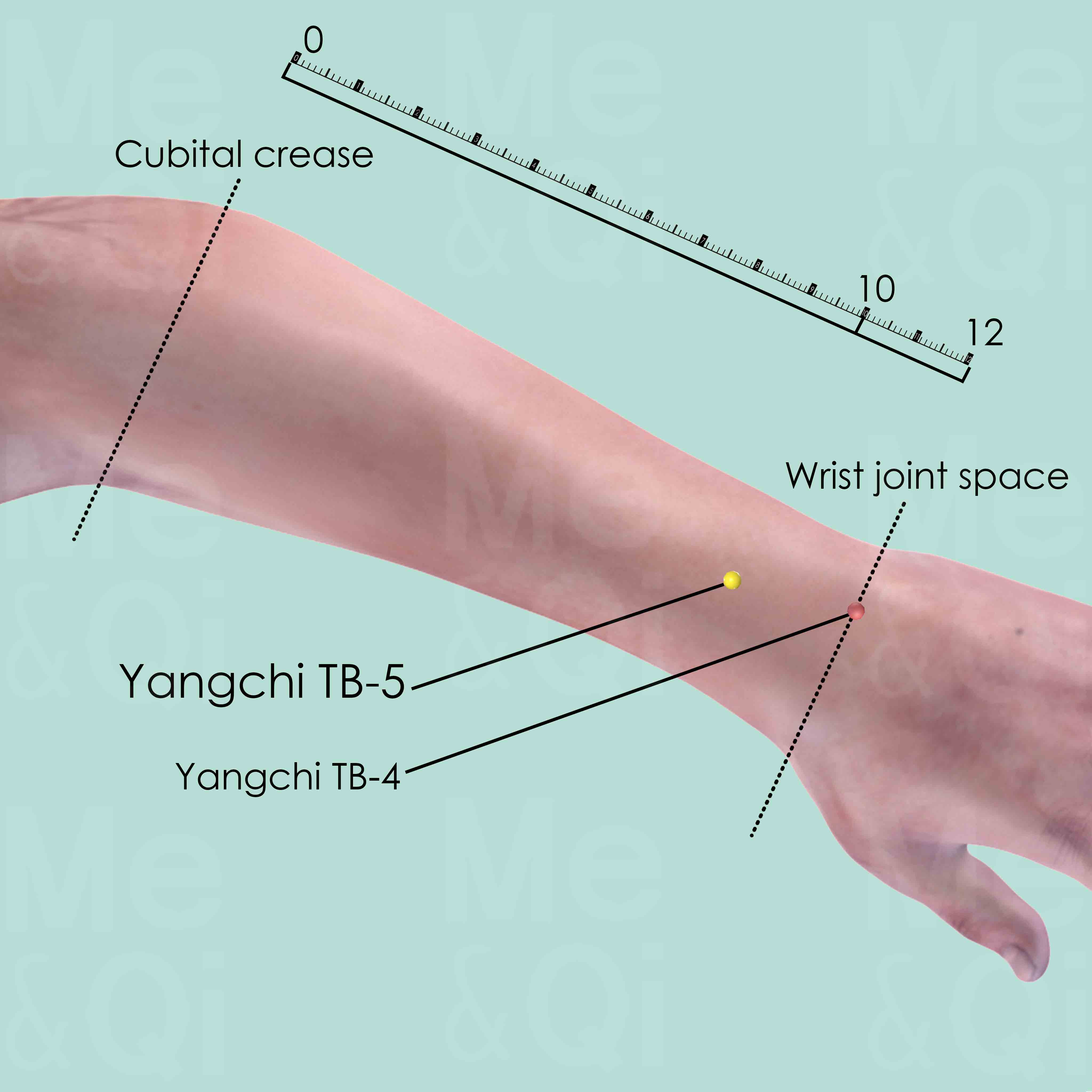Parotitisaccording to TCM
Symptom family: Salivary Gland Infections
What is Parotitis?
Parotitis is an inflammation of the parotid glands, the largest salivary glands located just in front of the ears. Symptoms can include swelling, pain, and tenderness in the area around the glands, difficulty in opening the mouth, and in some cases, fever or chills. This condition can be acute, often caused by bacterial or viral infections such as mumps (infectious parotitis), or chronic, which may result from blockage or poor salivary flow. Understanding the cause is essential for appropriate treatment.
How does TCM view Parotitis?
In Traditional Chinese Medicine (TCM), parotitis is seen as a manifestation of imbalance within the body's Qi (vital energy) and Blood, often caused by external pathogens like Wind, Heat, or Dampness invading the body.
TCM emphasizes the importance of identifying the specific disharmony pattern affecting the patient to effectively treat the condition. This approach considers not only the symptoms but also the overall health of the individual, aiming to restore balance and strengthen the body's natural defenses.
Causes of Parotitis according to TCM
TCM attributes parotitis to several potential causes, with Wind-Heat and Damp-Heat as the most common patterns of disharmony. Wind-Heat can invade the body's Exterior and combine with existing Internal Heat, leading to the inflammation and swelling characteristic of parotitis.
Damp-Heat, on the other hand, refers to a condition where Dampness accumulates in the body, often in the digestive system, and combines with Heat, potentially stemming from dietary habits or environmental factors. Both scenarios underscore the importance of diagnosing the underlying pattern to effectively address the symptoms and root causes of parotitis.
TCM Herbal Formulas for Parotitis
To combat parotitis, TCM practitioners may recommend a variety of herbal formulas based on the diagnosed pattern of disharmony. For cases involving Wind-Heat and Toxic-Heat, formulas like Bing Peng San, which includes cooling herbs like Borneol (Bing Pian), can be effective. Similarly, Yin Qiao San with Honeysuckle Flowers (Jin Yin Hua) addresses Wind-Heat invading the Lungs.
For Wind-Cold patterns, Jing Fang Bai Du San or Ren Shen Bai Du San, containing herbs such as Japanese catnip (Jing Jie) and Notopterygium Roots (Qiang Huo), respectively, can be utilized to expel the pathogen and boost Qi.
Additionally, Pu Ji Xiao Du Yin and Gan Lu Xiao Du Dan are recommended for clearing Heat and resolving toxicity, particularly in Damp-Heat and Toxic-Heat patterns.
Explore below some TCM herbal formulas used to address parotitis, organized by formula type.
- By Formula Type
- External formulas for external disorders
- Formulas that clear heat and resolve toxicity
- Formulas that harmonize lesser yang-warp disorders
- Formulas that clear heat and expel dampness
External formulas for External disorders
Parotitis can be treated by these formulas if it is caused by external factors like wind, cold, or heat leading to symptoms on the body's surface.
One such formula is Bing Peng San, with borneol as a key herb.
Other formulas of this category are listed in the table below.
All "external formulas for external disorders" recommended for parotitis
Formulas that clear Heat and resolve toxicity
Parotitis can be treated by formulas that clear Heat and resolve toxicity if it arises from heat toxins affecting the body.
One such formula is Pu Ji Xiao Du Yin, with baikal skullcap root as a key herb.
Formulas that harmonize lesser Yang-warp disorders
Parotitis can be treated by these formulas in cases of imbalances in the lesser Yang (Shao Yang) phase, which often involve alternating hot and cold sensations.
One such formula is Xiao Chai Hu Tang, with bupleurum root as a key herb.
Formulas that clear Heat and expel dampness
Parotitis can be treated by formulas that clear Heat and expel dampness if it results from heat combined with damp conditions in the body.
One such formula is Gan Lu Xiao Du Dan, with baikal skullcap root as a key herb.
Acupoints for Parotitis
TCM also incorporates acupuncture as a treatment for parotitis, targeting specific points to clear Heat, expel Wind, and alleviate swelling. Points such as Xiaohai SI-8 and Qiangu SI-2 on the Small Intestine Channel can open channels and remove Damp-Heat.
Daying ST-5 on the Stomach Channel and Futu LI-18 on the Large Intestine Channel are beneficial for expelling Wind and benefiting the throat. Additionally, Shaoshang LU-11 on the Lung Channel can help to diffuse and descend Lung Qi, further aiding in the treatment of parotitis. These acupoints, combined with herbal treatments, offer a comprehensive approach to managing parotitis in line with TCM principles.
Explore below some acupoints used to address parotitis, organized by meridian.
- By Meridian
- Small Intestine Channel
- Stomach Channel
- Extra Points: Head and Neck (EX-HN)
- Large Intestine Channel
- Lung Channel
- Gall Bladder Channel
- Triple Burner Channel
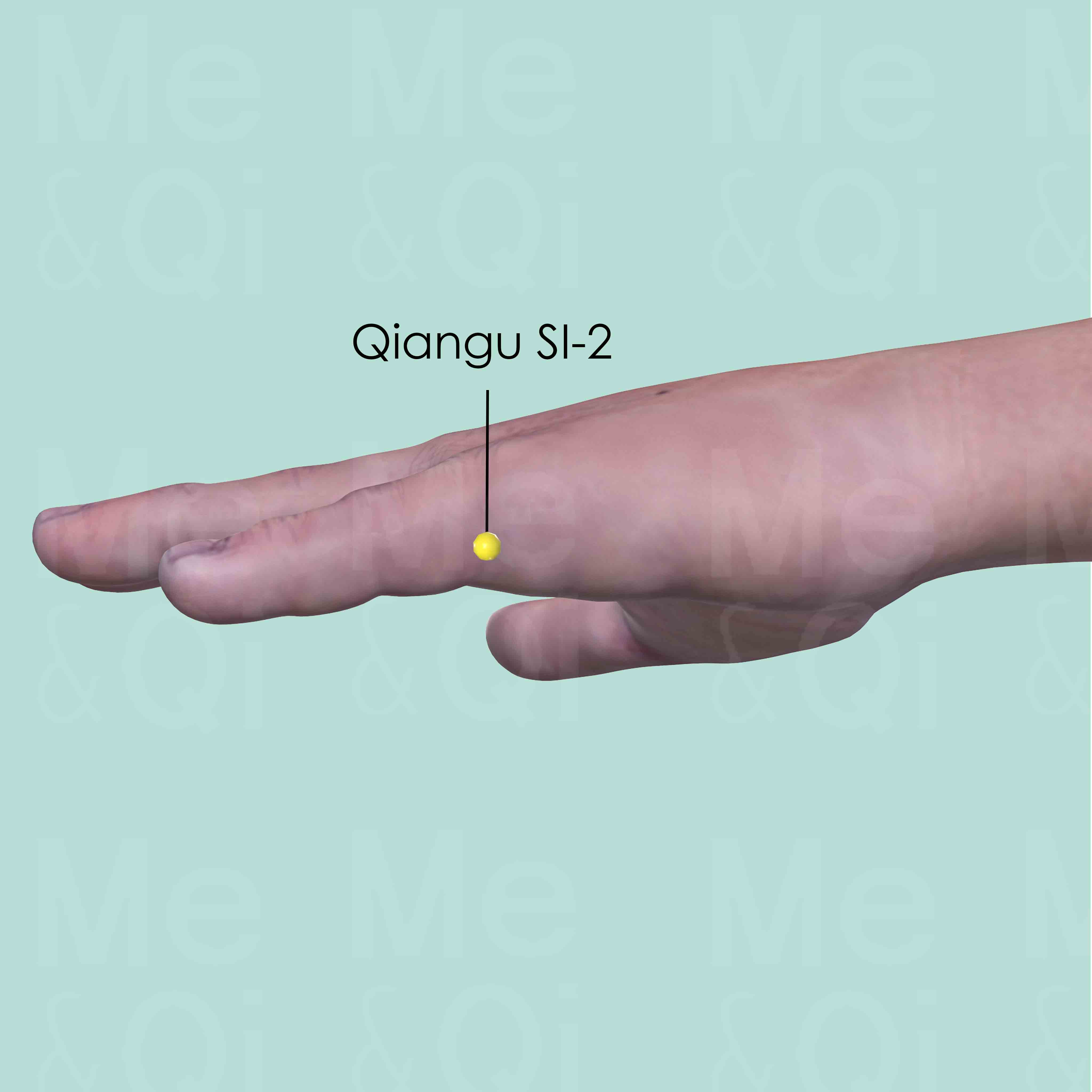
Qiangu SI-2
On the ulnar aspect of the little finger, distal to the metacarpophalangeal joint, at the junction of the shaft and the base of the proximal phalanx.
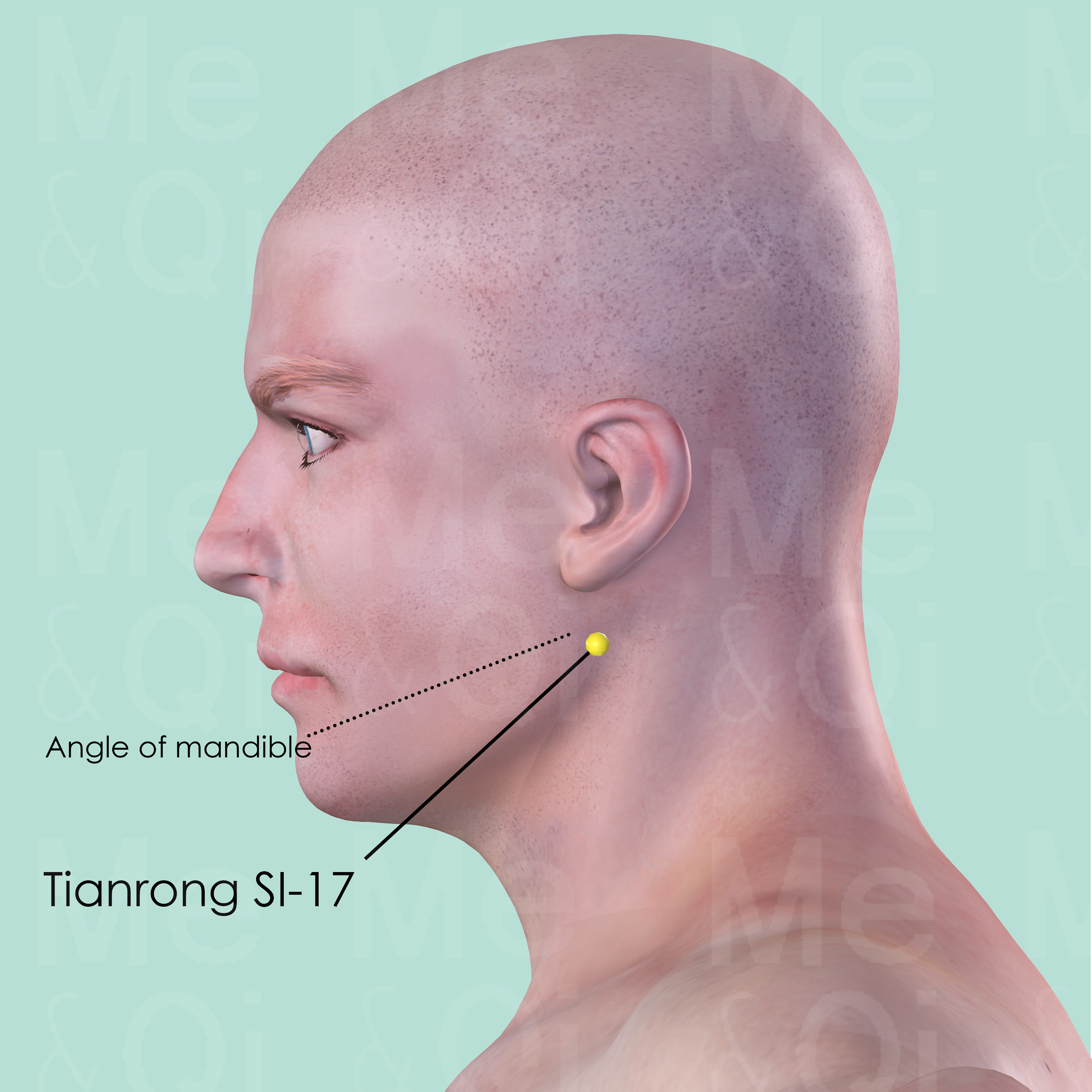
Tianrong SI-17
Posterior to the angle of mandible, in the depression on the anterior border of sternocleidomastoid muscle.
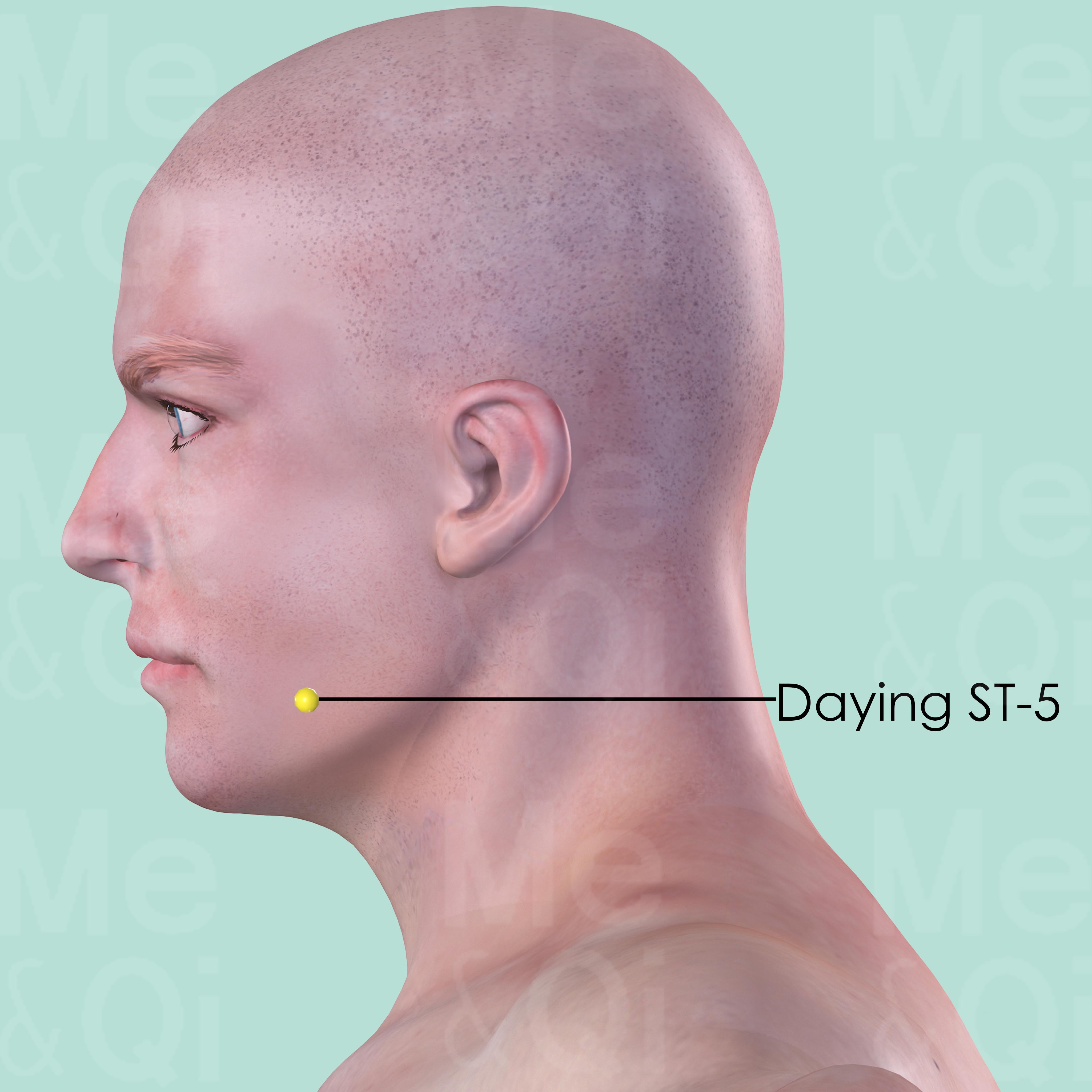
Daying ST-5
On the lateral mandible, on the anterior border of masseter muscle, in the groove-like depression appearing when the cheek is bulged.

Futu LI-18
On the lateral side of the neck, level with the tip of Adam's apple, between the sternal head and clavicular head of sternocleidomastoid muscle.
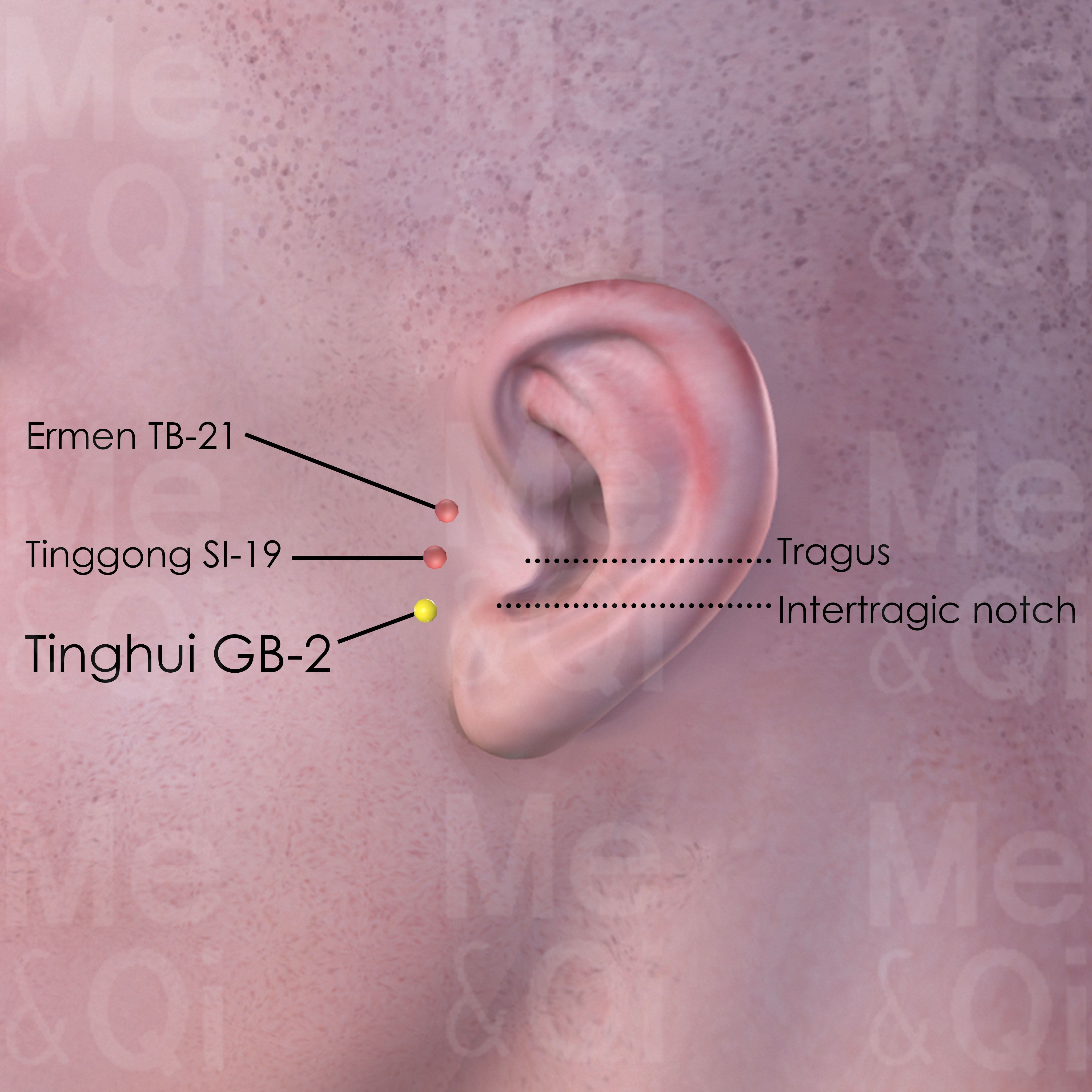
Tinghui GB-2
Anterior to the intertragic notch, directly below Tinggong SI-19, at the posterior border of the condyloid process of the mandible.
TCM Herbs for Parotitis
Explore below some TCM herbs used to address parotitis, organized by herb category.
- By Herb Category
- Herbs that clear heat and relieve toxicity
- Warm/Acrid herbs that release the exterior
- Cool/Acrid herbs that release the exterior
- Herbs that cool the blood
- Herbs that clear heat and dry dampness
- Herbs that drain dampness
- Herbs that open the orifices
- Herbs for external application
- Herbs that dispel wind and dampness
Herbs that clear Heat and relieve Toxicity
Parotitis can be treated by these herbs if it arises from internal heat and toxic accumulations, aiding in detoxification and cooling the body.
One such herb is Honeysuckle Flowers (Jin Yin Hua), a key herb in some formulas recommended for parotitis, like Yin Qiao San.
Other herbs of this category are listed in the table below.
"Herbs that clear Heat and relieve Toxicity" recommended for parotitis
| Herb | Formulas they belong to (if applicable) |
|---|---|
| Honeysuckle Flowers (Jin Yin Hua) | Yin Qiao San |
| Forsythia Fruits (Lian Qiao) | Yin Qiao San |
| Natural Indigo (Qing Dai) | Not applicable |
Warm/Acrid herbs that release the Exterior
Parotitis can be treated by these herbs when there is a need to dispel external cold and warm the body, especially in cases where there is insufficient Yang energy internally.
One such herb is Notopterygium Roots (Qiang Huo), a key herb in some formulas recommended for parotitis, like Jing Fang Bai Du San.
Other herbs of this category are listed in the table below.
"Warm/Acrid herbs that release the Exterior" recommended for parotitis
| Herb | Formulas they belong to (if applicable) |
|---|---|
| Notopterygium Roots (Qiang Huo) | Jing Fang Bai Du San | Ren Shen Bai Du San |
| Japanese Catnip (Jing Jie) | Jing Fang Bai Du San |
| Saposhnikovia Roots (Fang Feng) | Jing Fang Bai Du San |
Cool/Acrid herbs that release the Exterior
Parotitis can be treated by these herbs when the body needs to harmonize with external environmental changes, particularly when there's a need to expel pathogenic factors like wind or cold without overly cooling the body.
One such herb is Bupleurum Roots (Chai Hu), a key herb in some formulas recommended for parotitis, like Xiao Chai Hu Tang.
Other herbs of this category are listed in the table below.
"Cool/Acrid herbs that release the Exterior" recommended for parotitis
| Herb | Formulas they belong to (if applicable) |
|---|---|
| Bupleurum Roots (Chai Hu) | Xiao Chai Hu Tang |
| Greater Burdock Fruits (Niu Bang Zi) | Not applicable |
Herbs that cool the Blood
Parotitis can be treated by these herbs when it is a consequence of excess heat in the blood, helping to cool and detoxify the blood.
One such herb is Woad Leaves (Da Qing Ye), which is directly recommended for parotitis.
Other herbs of this category are listed in the table below.
"Herbs that cool the Blood" recommended for parotitis
| Herb | Formulas they belong to (if applicable) |
|---|---|
| Woad Leaves (Da Qing Ye) | Not applicable |
| Woad Roots (Ban Lan Gen) | Not applicable |
Herbs that clear Heat and dry Dampness
Parotitis can be treated by these herbs when caused by excessive dampness and heat within the body, aiming to restore balance by drying dampness and clearing heat.
One such herb is Baikal Skullcap Roots (Huang Qin), a key herb in some formulas recommended for parotitis, like Pu Ji Xiao Du Yin.
Other herbs of this category are listed in the table below.
"Herbs that clear Heat and dry Dampness" recommended for parotitis
| Herb | Formulas they belong to (if applicable) |
|---|---|
| Baikal Skullcap Roots (Huang Qin) | Pu Ji Xiao Du Yin | Gan Lu Xiao Du Dan |
| Goldthread Rhizomes (Huang Lian) | Pu Ji Xiao Du Yin |
Herbs that drain Dampness
Parotitis can be treated by these herbs when caused by excessive dampness in the body, aiding in eliminating damp through diuretic action.
One such herb is Talc (Hua Shi), a key herb in some formulas recommended for parotitis, like Gan Lu Xiao Du Dan.
Other herbs of this category are listed in the table below.
"Herbs that drain Dampness" recommended for parotitis
| Herb | Formulas they belong to (if applicable) |
|---|---|
| Talc (Hua Shi) | Gan Lu Xiao Du Dan |
| Virgate Wormwood (Yin Chen) | Gan Lu Xiao Du Dan |
Herbs that open the Orifices
Parotitis can be treated by these herbs if it's a result of blockages in the body's sensory orifices, aiding in restoring clarity and consciousness.
One such herb is Borneol (Bing Pian), a key herb in some formulas recommended for parotitis, like Bing Peng San.
Herbs for external application
Parotitis can be treated by these herbs when the condition is external or superficial, requiring topical treatment to alleviate symptoms or heal the affected area.
One such herb is Borax (Peng Sha), a key herb in some formulas recommended for parotitis, like Bing Peng San.
Herbs that dispel Wind and Dampness
Parotitis can be treated by these herbs when it is due to the invasion or accumulation of wind and dampness, which often affects the muscles and joints.
One such herb is Pubescent Angelica Roots (Du Huo), a key herb in some formulas recommended for parotitis, like Jing Fang Bai Du San.
